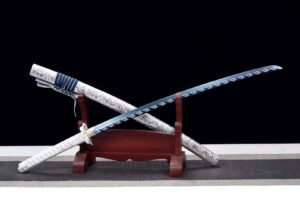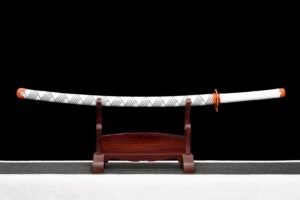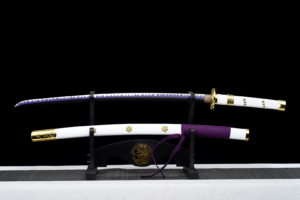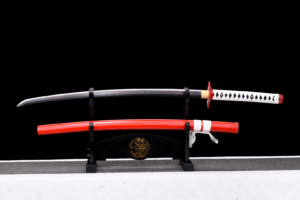Wars in the past are made with very specific weapons and armor. This specificity also applies to samurai warriors who use katana, and typical armor to defend themselves. Commonly called by the occult, armor of Japan, samurai armor is much more than just combat equipment. This work of art is a reflection of Japanese translation, craftsmanship and timeless innovations in weaponry. Designed to protect samurai warriors and daimyo, it is an iconic symbol of Japanese culture and history. Would you like more information about the armor and weapons of Samurai? Read this article to master the different types of samurai armor, while highlighting its cultural importance.
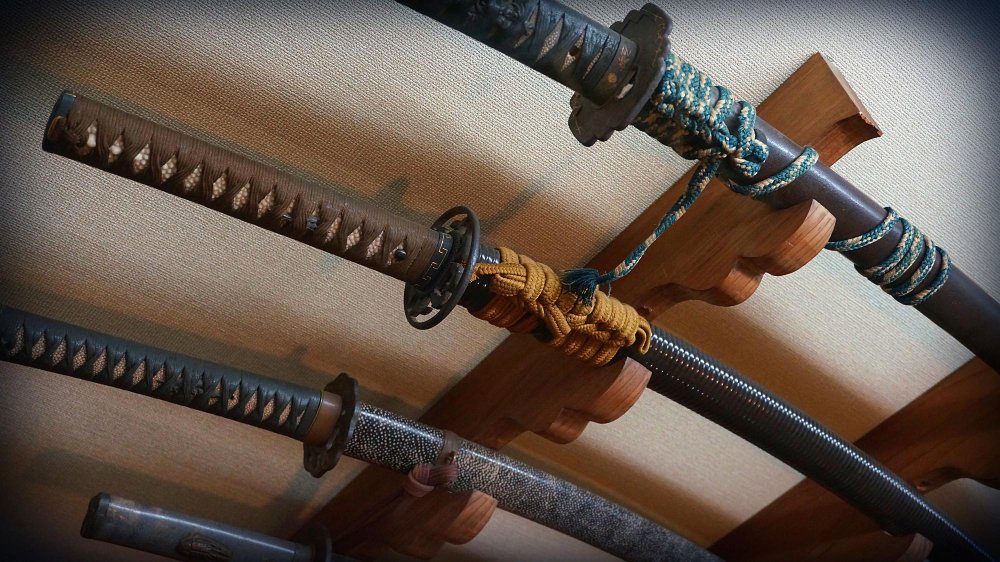
Samurai armor details overview
Japan is one of the most recognized countries for their armor and typical weapons. To begin with, this country has different types of fighters who have all proven themselves. The samurai were also very ink for their efficiency and armor.
Historical context of samurai armor
Samurai armor was born during the Heian period which took place between 794 and 1185. It should be noted that this era is marked by incessant conflicts and the rise of the class of samurai fighters. During this period, the best known form of this armor is called ō-yoroi. The latter was mainly used by riders during high intensity rides.
For optimal efficiency, this armor consists of small plates of metal or leather that are placed between them. Also, it should be noted that manufacturers make sure that it weighs between 20 and 30 kg. These plates, called kozane, were often reinforced with lacquer to protect them from moisture and weather.
As time goes on, lighter armor models such as the dō-maru and haramaki are appearing. These have been developed for infantry, who need flexibility and mobility without sacrificing protection. First, the dō-maru was a lighter suit of armor that slid in from the side and closed with cords.
On the other hand, the haramaki only protected the bust and placed itself in the back of its wearer. These different innovations are intended to allow soldiers to move faster on the battlefield without being vulnerable.
Evolution of the samurai armor design
Between 1467 and 1573, Japan experienced a plethora of wars which led to the arrival of firearms. The various conflicts of this period led to a major overhaul of the armor of samurai warriors.
More known, tōsei gusoku armor is very light and resistant. It is their lightness that has made them replace the old models which are very heavy and can become disturbing in a confrontation. These new armor weigh only between 10 and 13 kg. Despite their weight, they are made of iron and steel plates that allow them to offer optimal protection to the warrior.
The plates were often riveted or laced together, which allowed better resistance to impacts from bullets and sharp weapons. During the Edo period (1603-1868), armor became symbols of status and wealth. These armors are often used as ceremonial clothing rather than for combat.
Daimyos and high-ranking samurai compete for the most richly decorated armor. These decorations vary between gold motifs, coloured lacquers and imposing cistern. These armors were often displayed at ceremonies or parades.
Importance of samurai armor in Japanese culture
Samurai armor was not only a tool of war; it also represented the social status, honor and loyalty of the warrior. Each piece was carefully designed and adorned. It must be a reflection of Japanese craftsmanship and aesthetics.
The patterns and colours used on armor often had a symbolic meaning. And each color represents each of the elements of nature, mythical animals, or family emblems. Today, these armors are collector’s items and cultural symbols preserved in museums and private collections.
They continue to inspire artists, filmmakers and history buffs around the world. This is a reminder to all lovers of Japanese stories of the lasting legacy of the samurai.
Components of samurai armor
When designing a samurai armor, several components come into play. It should be noted that each element has a specific role for the protection of warriors. So here are the components of the armor of Japanese weapons bearers.
Helmet (Kabuto)
The kabuto is one of the most recognizable pieces of samurai armor. It is often adorned with a crest (maedate) and a frontal blade (fukikashi). This combination symbolizes the status and identity of the warrior. The helmet is also equipped with a neck protector (shikoro) to protect against attacks from behind.
It should be noted that the most elaborate helmets were often decorated with complex patterns, such as:
- dragons,
- phoenix,
- cherry blossoms
Each chosen decor must reflect the personality and beliefs of the wearer. In that case, if the helmet isn’t strong enough, you can easily be fooled by your opponent. That’s why its components are taken so seriously.
Body armor (Do)
The dō, or plastron, is the centerpiece of the armor. It protects the torso and is often personalized with patterns or family badges. Models vary according to time and social rank, ranging from traditional lamellar armor to riveted iron plates. Some armors, such as tatami-dō, were designed to be foldable. This design allows for better mobility and easier storage.
Thigh Protection (Haidate)
The haidate is a thigh-protecting bib. It is usually made of metal plates or laced leather. A blend to offer warriors protection while allowing great mobility. The haidate was often worn under the skirt (kusazuri), which protected the hips and thighs.
Arm Guard (Kote)
Kote are reinforced sleeves that protect the forearms. They are often equipped with lacquered metal plates for better resistance to blows. Kotes were also designed to allow great dexterity, essential for handling weapons such as the katana or bow.
Leg protectors (Suneate)
Suneate are leg protectors that protect the legs and knees. They are designed to be lightweight while providing maximum protection against sharp weapons. Suneate were often worn with special shoes, called kōgake, which protected the feet.
Types of samurai armor
Depending on the status, family, clan and level of soldiers, there are several types of armor to recognize a warrior. Here are the different types of samurai armor:
Traditional vs. modern armor
Traditional armor, such as the ō-yoroi, was designed for cavalry and was often very heavy and cumbersome. In contrast, modern armor, developed during the Sengoku period, was lighter and adapted to ground combat. Today, samurai armor is mainly used for ceremonial purposes or as a collector’s item.
Differences in armor styles by social class
High-ranking samurai wore richly decorated armor, often adorned with gold motifs and coloured lacquers. In contrast, lower-ranking soldiers wore simpler and more functional armor made from less expensive materials.
The armor of the daimyo was often accompanied by accessories such as banners (sashimono) or ornaments (agemaki). It should be noted that the latter were used to identify their clan on the battlefield.
Popular materials used in the manufacture of samurai armor
Samurai armor was made from a variety of materials, including iron, steel, leather and silk. Metal plates were often lacquered to protect them from rust. On the other hand, the silk ropes made it possible to link the different parts of the armor.
Some armor also used exotic materials such as shakudō (an alloy of gold and copper) or shibuichi (an alloy of silver and copper) for decorative elements.
Conclusion
Samurai armor is more than just protective gear; it is a testament to Japanese history, craft and culture. From its origins during the Heian period to its evolution during the Sengoku period, each piece of armor tells a story of bravery, honor and tradition. Today, these armors continue to fascinate and inspire, recalling the enduring legacy of the samurai.
FAQ
What materials were used to make samurai armor?
armor was made of iron, steel, leather and silk, often lacquered for durability. For the design of these armor, experts leave no detail to chance. You must therefore ensure the quality and components used for optimal efficiency.
How has samurai armor evolved over time?
The armor has gone from heavy and bulky designs like the ō-yoroi to lighter and stronger designs like the tōsei gusoku. In each era, warriors have seen their armor evolve to best meet the needs on the battlefield.
What are the different parts of samurai armor?
The main parts include the helmet (kabuto), the plastron (dō), the thigh pads (haidate), the arm pads (kote) and the leg pads (suneate).
Why was samurai armor considered a status symbol?
The richly decorated armor reflected the wearer’s social status and wealth, often adorned with gold motifs and coloured lacquers.


